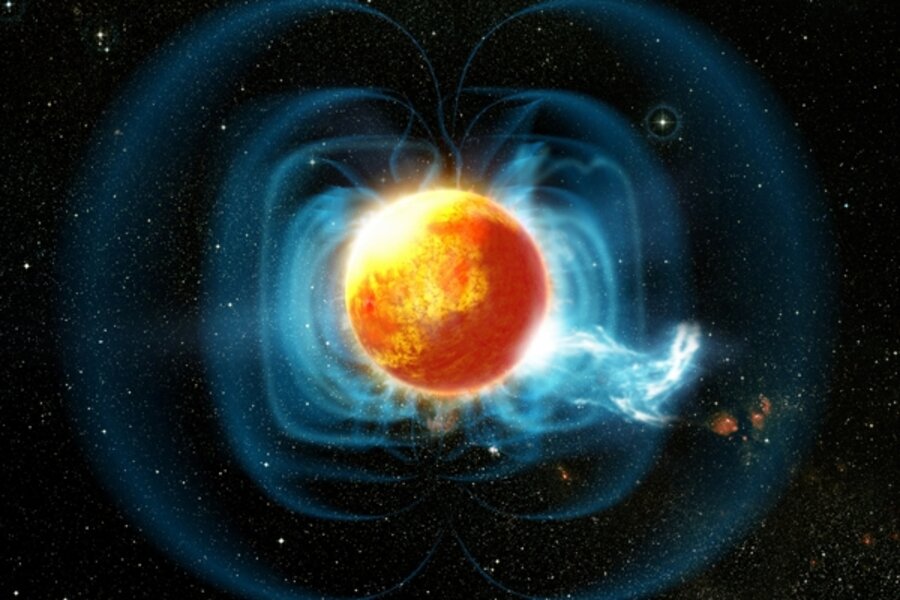The hunt for astronomical gold in familiar phenomena
Loading...
While astronomers always hope to find exotic new phenomena, they know it pays to take a fresh look at things well known. Three recent examples make this point.
Cosmic measuring tape
A search of previously published observations has come up with a better way of measuring some cosmic distances. Ofer Lahav at Britain's University College in London said it "will have profound implications
for understanding the basic properties of our universe."
Dr. Lahav explained in the journal Nature that such measurements can help refine our understanding of the distribution and makeup of the cosmos. He was commenting on a study published in a astrophysical journal. Lead author Jonathan Bird of Ohio State University then updated the research in early June at a meeting of the American Astronomical Society in Pasadena, Calif.
Astronomers have long used giant stars called Cepheid variables for the first leg of their cosmic distance scale. The rate at which the star's light pulses indicates the star's intrinsic brightness. Knowing that, and seeing how faint the star appears from Earth, measures the star's distance. It's the so-called "standard candle" effect. This has enabled highly accurate distance measurements out to about 100 million light years.
Searching the astronomical literature, Mr. Bird and his colleagues have identified 18 examples of a type of Cepheid that can act as a standard out to 300 million light years. Extending Cepheid accuracy to three times its former reach will refine our knowledge of the universe's expansion. It will also help in calibrating some other types of distance measurement that overlap the Cepheid range but have a much farther reach.
Galactic intruders
A new look at the position, distance, and motion measurements of what astronomers call "ultracool subdwarf" stars has identified an intruder from another galaxy.
At the same meeting where Bird discussed his new method, Adam Burgasser and John Bochanski from the Massachusetts Institute of Technology described their study of those ultracool dwarf stars. Our galaxy's outer halo has streams of stars that have come from nearby galaxies. But the ultracools are moving "like nothing I'd ever seen before," according to study co-author Robyn Sanderson. They whiz by our solar system at relative speeds of more than a million miles an hour. Some loop into the galaxy center. One orbits up to 200,000 light years from that center. Dr. Bochanski speculates it may have come from another galaxy that once came too close to our own. He says that, if we could identify its origin, "we could learn more about the types of stars that have built up the Milky Way' halo over the past 10 billion years."
A "smoking gun" in deep space
A study published on the Science Express website today finally identifies the cosmic "gun" that fires the high speed "bullets" that cause flashes in astronauts' eye balls and glitches in earth-based electronic equipment.
Astronomers identified them as cosmic ray protons from deep space. But they didn't know what accelerated them to a few percent of the speed of light. Astronomers speculated that gas clouds expanding from exploding stars did the trick. Now Eveline Helder at Utrecht University in the Netherlands says she and her colleagues have found "the smoking gun that proves it." Using ground based and satellite observations that measure temperatures – and hence energy – in those expanding gas clouds, the study proves that's where the high speed particles get their energy.
The bottom line for these three reports: there's astronomical gold to be found when looking at familiar things with fresh eyes.





